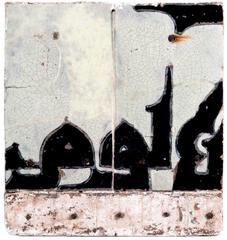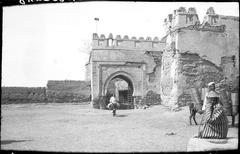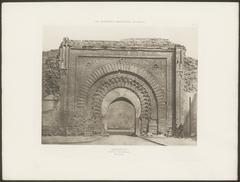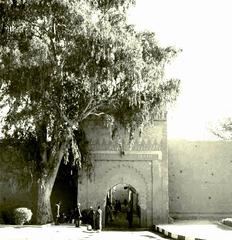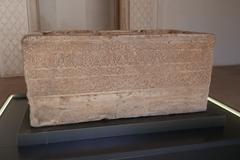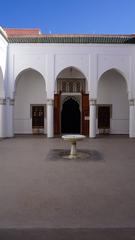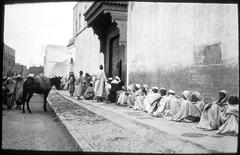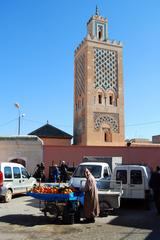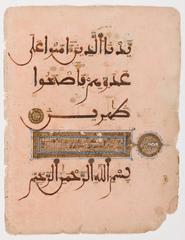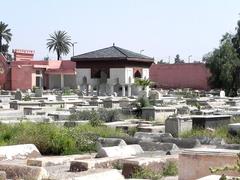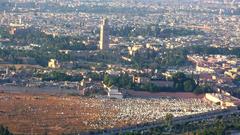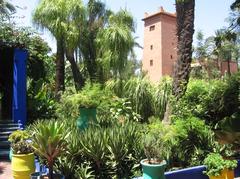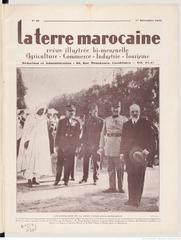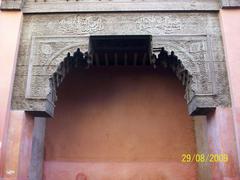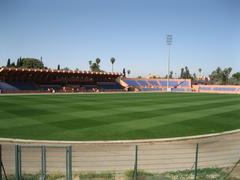Mouassine Museum Visiting Hours, Tickets, and Guide to Marrakesh Historical Sites
Date: 03/07/2025
Introduction
Nestled in the heart of Marrakesh’s historic medina, the Mouassine Museum stands as a remarkable testament to the city’s Saadian heritage and diverse cultural history. Housed in a beautifully restored 16th-century palace, the museum forms part of the larger Mouassine complex, which includes the mosque, madrasa, hammam, library, and renowned fountain. The museum offers visitors an immersive journey into Moroccan craftsmanship, traditional music, and social customs from a bygone era. Its architectural splendor—marked by intricate geometric patterns, carved cedar wood, ornate stucco, and vibrant zellij tilework—reflects the sophisticated fusion of Moroccan and Andalusian influences. The museum also hosts rotating exhibitions, live music performances, and educational programs, making it a pivotal cultural hub within the medina. This comprehensive guide details the museum’s origins, architectural significance, collections, visiting hours, ticket options, accessibility, and nearby attractions, ensuring you have all the information needed for a rewarding visit (trek.zone, egypttoursplus.com, vivre-marrakech.com, museedemouassine.com).
Table of Contents
- Origins and Historical Context
- Architectural Significance
- Museum Collections and Exhibitions
- Restoration and Preservation
- Visitor Information (Hours, Tickets, Accessibility)
- Cultural Programming and Events
- Nearby Attractions
- Practical Visitor Tips
- Frequently Asked Questions (FAQ)
- Conclusion
- References
Origins and Historical Context
The Mouassine Museum is part of the Mouassine complex, built during the Saadian dynasty under Sultan Abdallah al-Ghalib (reigned 1557–1574). This ensemble, completed by 1562, was a centerpiece of the Saadian initiative to reorganize and beautify the medina. The Saadians, who ruled Morocco from 1549 to 1659, left a lasting legacy of architectural and artistic innovation in Marrakesh. The complex originally served religious, educational, and social functions: the mosque as a place of worship, the madrasa for education, the hammam for public baths, the library for scholarship, and the fountain for communal water supply (trek.zone).
Architectural Significance
The museum occupies a restored Saadian-era palace, or douiria (guest apartment), exemplifying the fusion of Moroccan and Andalusian aesthetics. Notable features include:
- Central Courtyard: Flooded with natural light, adorned with zellij tiles and lush greenery.
- Intricate Stucco and Carved Cedar Wood: Hallmarks of Saadian-era craftsmanship.
- Painted Ceilings and Sun Motifs: Reflecting both artistic and symbolic traditions.
- Horseshoe Arches and Muqarnas Vaulting: Echoing Moorish and Andalusian influences (egypttoursplus.com, mexicohistorico.com).
The building’s layout separates public and private zones, as was customary in traditional Moroccan residences. Its restoration preserves original materials and techniques, particularly in the zellij tilework and tadelakt plaster.
Museum Collections and Exhibitions
Permanent Collections
-
Traditional Moroccan Musical Instruments:
- Daqqa Marrakchia percussion
- Gnawa instruments (guembri, krakebs)
- Amazigh (Berber) instruments (bendir, rhaita)
- Andalusian instruments (oud, qanun)
- Each exhibit features detailed descriptions and multimedia presentations (vivre-marrakech.com).
-
Decorative Arts and Textiles:
- Handwoven textiles, embroidered garments, ceramics, metalwork, and furniture.
- Many items are linked to the Mellakh family, former residents for over two centuries.
-
Photographic Archives:
- A poignant collection donated by Charles and Paulette Henneghien, capturing daily life in 1960s Morocco (museedemouassine.com).
Temporary and Rotating Exhibitions
- Focus on regional music, wedding traditions, and collaborations with contemporary Moroccan artists.
- Include talks, workshops, and guided tours to enhance cultural understanding.
Restoration and Preservation
Ongoing restoration efforts ensure the survival of this architectural gem. Key initiatives include:
- Structural Stabilization: Strengthening foundations and walls using traditional methods.
- Artisanal Restoration: Employing skilled craftspeople to renew stucco, woodwork, and tiles.
- Adaptive Reuse: Integrating modern amenities (lighting, climate control) without compromising authenticity.
- Environmental Controls: Protecting collections from humidity and temperature shifts.
These efforts are supported by the Moroccan Ministry of Culture and various heritage organizations, aligning with the broader goal of safeguarding the UNESCO-listed medina (trek.zone).
Visitor Information
Location & Getting There
- Address: Derb El Hammam, Rue Mouassine, Medina – Marrakesh
- Nearby Landmarks: Jemaa el-Fnaa (5 minutes’ walk), Marrakech Museum, Ben Youssef Madrasa, Dar el Bacha.
Transportation
- By Air: 7 km from Marrakesh Menara Airport (taxi: 9 minutes, shuttle: 11 minutes).
- By Bus: Closest stop is Dar Lbacha.
- By Taxi: Widely available; drop-off at Rue Mouassine.
- On Foot: Easily walkable for central medina visitors.
Visiting Hours
- General: Daily, 10:00–19:00 (some sources: 9:30–19:00 or 9:00–18:00; check official site or call +212 524 377 792 for updates).
- Concert Evenings: Monday, Wednesday, Friday, 18:00–19:00.
Ticket Prices
- Standard Entry: 40–70 MAD for adults (varies by exhibition or event).
- Children under 15: Free.
- Concert plus tea: 100 MAD; concert plus meal: 260 MAD.
- Admission Validity: Some tickets valid for multiple visits during your stay.
- Combined Tickets: Occasionally available with nearby attractions.
Accessibility
- Wheelchair Access: Main areas accessible; some upper floors may present challenges due to historic structure.
- Families: Free entry for children under 15; family-friendly facilities.
Amenities
- Rooftop Café: Moroccan tea, panoramic views.
- Gift Shop: Books, CDs, crafts.
- Restrooms: On-site.
- Languages: French, Arabic, and increasing English availability.
Cultural Programming and Events
- Live Concerts: Traditional Moroccan music (Daqqa Marrakchia, Gnawa) in the douiria, Monday/Wednesday/Friday evenings. Advance reservation required due to limited seating (museedemouassine.com).
- Workshops and Guided Tours: Educational programs, artisan demonstrations, school visits, and lectures.
- Special Events: Participation in citywide events such as Nuit des Musées and artist residencies.
- Foundation Initiatives: The Fondation Mellakh promotes music and arts preservation (vivre-marrakech.com).
Nearby Attractions
- Marrakech Museum: Arts and crafts in a historic palace.
- Ben Youssef Madrasa: Renowned for exquisite tilework and architectural detail.
- Jemaa el-Fnaa: Marrakesh’s bustling central square.
- Dar el Bacha: A palace with remarkable décor and exhibitions.
- Maison de la Photographie: Photographic archive, sometimes included in combined tickets.
- Jardin Majorelle: Famous botanical garden (3.3 km away).
Practical Visitor Tips
- Advance Booking: Recommended for concerts and guided tours.
- Photography: Allowed in most areas; check for restrictions during performances.
- Dress Code: Modest attire is respectful in this historic setting.
- Weather: The museum is a cool retreat during Marrakesh’s hotter months; rooftop best enjoyed in the morning or evening.
- Language: Labels in French and Arabic; staff often speak English.
Frequently Asked Questions (FAQ)
Q: What are the Mouassine Museum’s opening hours?
A: Typically 10:00–19:00 daily. Confirm on official website or by phone.
Q: How much is admission?
A: Adults: 40–70 MAD; children under 15: free; concert packages extra.
Q: Are guided tours available?
A: Yes, with a cultural mediator; advance notice recommended for groups.
Q: Is the museum wheelchair accessible?
A: Main areas are accessible, but some upper floors may be challenging.
Q: Can I attend a live concert?
A: Yes, every Monday, Wednesday, and Friday, 18:00–19:00; reserve in advance.
Q: Is photography allowed?
A: Generally yes, but restrictions may apply during performances or in specific exhibits.
Conclusion
The Mouassine Museum is a jewel of Marrakesh’s medina, uniting Saadian-era architectural grandeur with Morocco’s diverse musical and artistic traditions. Its meticulously restored interiors, engaging exhibitions, live performances, and panoramic rooftop views create a unique and enriching visitor experience. The museum’s location—steps from major historical sites—makes it a must-visit for anyone seeking to explore Marrakesh’s living heritage. Plan your visit in advance, especially for concerts, and immerse yourself in the cultural tapestry of Morocco. For real-time updates, downloadable guides, interactive maps, and curated itineraries, download the Audiala app and follow us on social media.
References and Further Reading
- This guide is based on authoritative sources, including trek.zone, egypttoursplus.com, vivre-marrakech.com, and the official Mouassine Museum website.
Image suggestions:
- Facade of the Mouassine Museum (“Mouassine Museum Marrakech entrance showcasing Saadian-era architecture”)
- Traditional musical instruments (“Traditional Moroccan musical instruments displayed at Mouassine Museum”)
- Live concert scene (“Traditional music performance at Mouassine Museum Marrakech”)
- Map of the museum’s location (“Map locating Mouassine Museum near Jemaa el-Fna square”)
